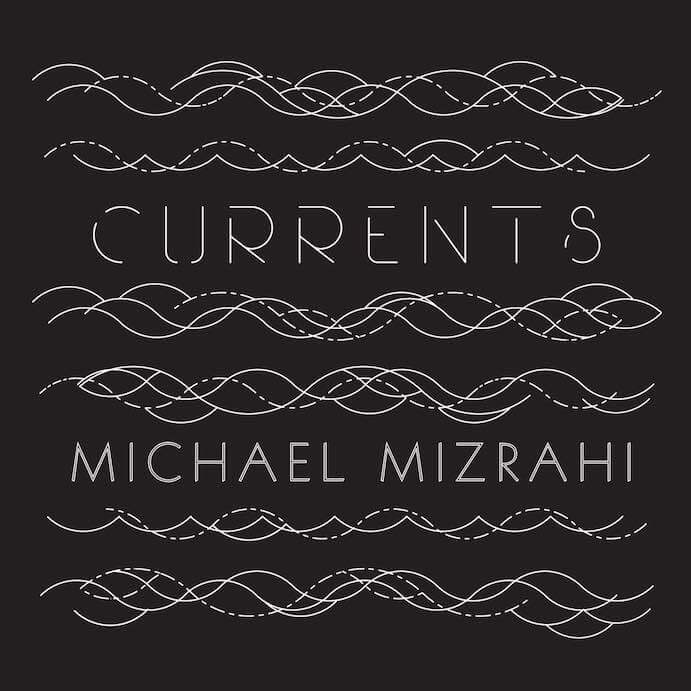From the 17th to the early-19th century, one might liberally classify a composer and his or her work as “German” or “French” in nature. However, in today’s post-industrial Information Age, new compositions cannot readily be catalogued into any one school or another. Given the Goldilocks-standard of an ideal century and venue, modern composers have shown us music critics, time and again, that they can and will use the free-flow of ideas to create eclectic works that, to listeners, seem just right. Pianist Michael Mizrahi’s Currents on New Amsterdam Records is a reverent tribute to musical stylings, both old and new. Featuring composers Sarah Kirkland Snider, Troy Herion, Mark Dancigers, Asha Srinivasan, Missy Mazzoli, and Patrick Burke, Currents reminds listeners that the modi operandi of composers past remain relevant today, personalized by today’s talented artists. Mizrahi, the sole performer in Currents, is a veritable chameleon of the piano, seamlessly transitioning between the diverse stylistic influences of each track.
Sarah Kirkland Snider’s 2013 eponymously titled piece, The Currents, effectively avoids indulging emotion, favoring subtle atmospheric suggestion, true to 19th century impressionism. Flowing lyricism in the upper registers are accompanied by brooding ostinato from the left hand. The piece, however, is not without its surprises. On several occasions, the tone changes in unprepared modulation. Mizrahi’s performance breathes life to the notes at these moments with abrupt dynamic and temporal shifts. At times tempestuous, at others placid, The Currents is a force of nature—both monsoon and mild breeze.

Composer Sarah Kirkland Snider (photo © Willy Somma)
Harpsichords, by Troy Herion, honors forms largely exceeded since the advent of the modern piano. Listening, I recall one post-concert celebration from my college days. Gathered at our professor’s home, we managed to coax our modest director to perform for us on his clavichord—an instrument for which he was well-known. A hush fell in the crowded room as we trained our ears to the delicate melodies. Like the clavichord, the harpsichord requires similar attentiveness. Herion’s piece emulates the short, precise pluckings of the harpsichord with the added benefit of the piano’s ability to project dynamic levels. The composition is sprinkled with light trills and mordents—ornaments for which the harpsichord was well-suited. In one particularly delightful segment, light, punctuated notes in the upper register accompany a rapid cadenza-like phrase in the left hand. Considering the harpsichord’s limited faculties for suspending notes, such passages gave virtuosic color to works during the Baroque period.
With Mark Dancigers’ The Bright Motion Ascending, the composer seems to introduce himself as a gymnopédiste, just as one notorious composer famously claimed as his profession when compelled to place labels on his work. The third installment of his “Bright Motion” series, Dancigers’ The Bright Motion Ascending meanders among tonalities—a characteristic reminiscent of Satie’s delightful “furniture music.” Drifting parallel chords mask tonality, allowing the ear to focus on motion rather than tonal resolution. As demonstrated in Snider’s The Currents, Mizrahi treats Dancigers’ score as a canvas—glittering passages are expertly managed by controlled, calculated keystrokes. The product conjures images of Autumn—bright colors and the drift of leaves subjected to the fickle whims of the wind.
Michael Mizrahi–Photo by Rachel Crowl
In the five-part Mercurial Reveries, Asha Srinivasan transports the audience East, to explore harmonies less-explored in the Western classical tradition. Inspired by Indian classical music forms, the piece is dense with improvisatory exploration. At times, Srinivasan eschews the diatonicism for pentatonic structures, modulating between phrases. The effect is a sparse environment in which Mizrahi interjects with curious musings of the trimmed scale. Mercurial Reveries also takes liberty with Cowellian extended techniques, demanding direct pizzicato of the piano’s strings. The loose framework provided by Srinivasan allows Mizrahi to devise innovative timbres that blend in a less-populated aural space.
Currents precedes Patrick Burke’s Missing Piece with recollections of romanticism in Heartbreaker by Missy Mazzoli. From its title alone, Heartbreaker, composed in 2013, sets the stage for personal, human emotional content. Accordingly, one might liken the piece to Romantic programmatic music. Indeed, Heartbreaker’s pointed “statements” in the upper register invite Mizrahi’s deliciously schmaltzy rubato to swell.
Missy Mazzoli– Photo by Stephen Taylor.
Patrick Burke concludes the album with Missing Piece, a composition whose uncanny disquiet/quiet would fit perfectly in any horror film. Burke employs a repetitive, three-tone motif in the left hand to achieve this effect, slowly, gently descending. Bright, high-note interruptions disturb the unease. The use of repetitive, calculated themes is a common technique used in music of all periods. In Haydn’s Symphony No. 101, Mov. 2, the constant “ticking” of plucked strings and bassoon offers a light reverie following the first movement (which subsequently led to the work affectionately becoming known as “The Clock”). In The Nutcracker, Act I, Scene 6, a grandfather clock chimes before midnight, foreshadowing Clara’s fantastical journey down the rabbit hole. In both instances, these metric underpinnings function as creative transitions at the center of a larger work—a sort of middle movement, if you will. I personally like to imagine Mizrahi and his collaborators debating between Mercurial Reveries or Missing Piece for their final track. That said, Burke’s foreboding mood sends its own message: it leaves us a little on edge, a little expectant, and a lotta wanting more.

